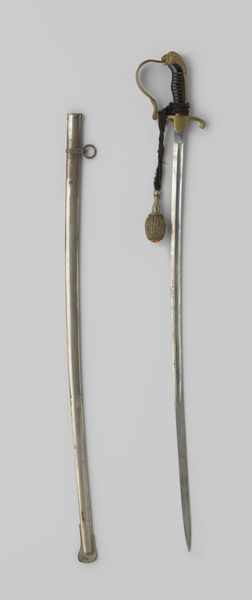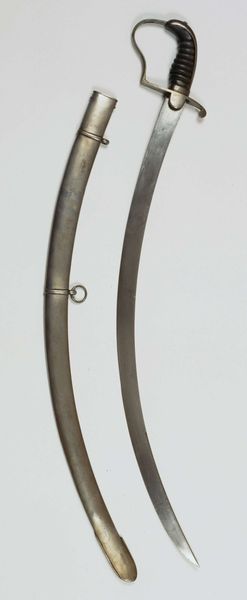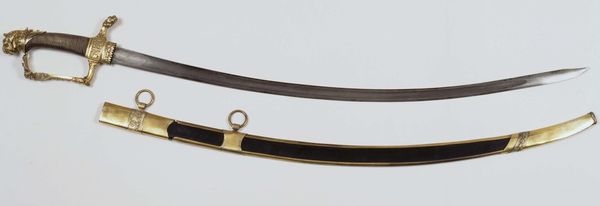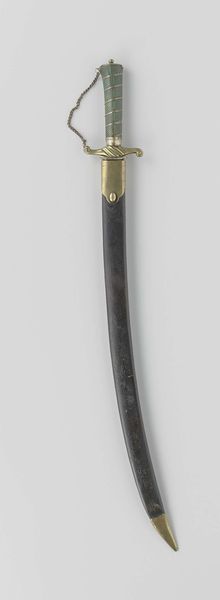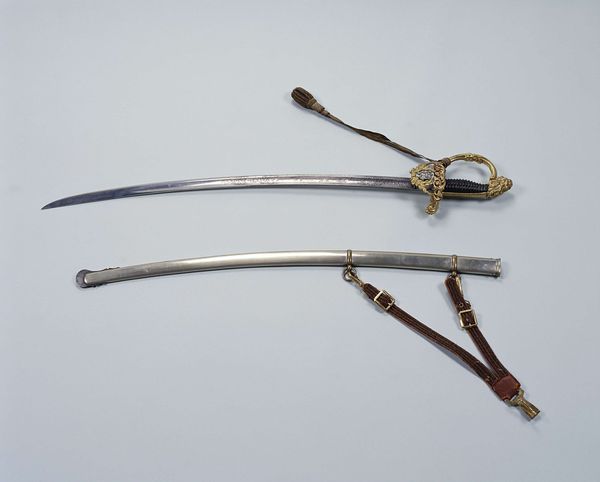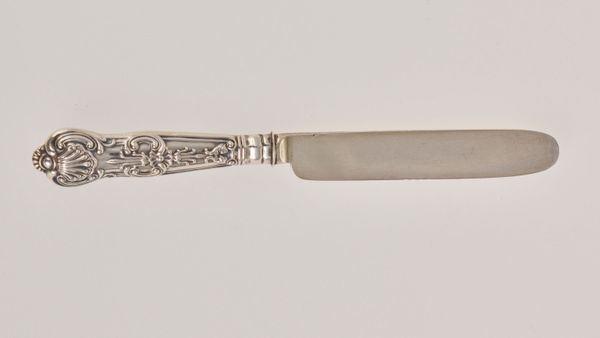
silver, metal, gold, sculpture, ivory
#
medieval
#
silver
#
metal
#
gold
#
sculpture
#
ivory
Dimensions: length 87 cm, width 31.5 cm, height 3.5 cm, length 73.5 cm
Copyright: Rijks Museum: Open Domain
Curator: Welcome, I'd like to draw your attention to a fascinating piece of martial history. This is a sabre that once belonged to the 1st Regiment of Dragoons. The piece is constructed from ivory, silver, gold, and other metals, dating from around 1400-1950. Editor: Whoa, a bit severe at first glance. Makes me think of honor, tradition and all that military baggage… Cold metal meant for deciding things, very permanently, I’d imagine. Is that an inscription there on the blade? Curator: Indeed it is. And let’s not forget its potential owner, part of an elite cavalry unit of soldiers typically armed with firearms in addition to their swords. Dragoon regiments played key roles in warfare of the era and even in imperial administration, and items like these reinforced martial prowess. Editor: Interesting. I initially perceived it as cold, but when you zoom in on the decorative features, suddenly the artistry overwhelms the death part. This feels much more nuanced, that detailed handle has some baroque flare. Like an officer in a silk shirt waving his sword instead of actually cutting something. It’s a prop. Curator: Well, Dragoons historically functioned as both cavalry and infantry, used as shock troops during battles. While beautiful, the item likely also functioned as designed! Still, one cannot deny how museums contribute to decontextualization of certain pieces. This saber, which might once have functioned as an instrument of death and repression, finds a very different role today. It acts as a repository for the history of the era. Editor: You know, when an object transitions from practical usage to museum showcase, does it take on a kind of quiet resilience? Outliving conflict to embody remembrance and, I suppose, a little bit of warning? Like, “I am what happens when conflict escalates. Ponder on me”. Curator: Very astute observation. What museums chose to keep becomes cultural legacy, shaping present understanding of the past. What a beautiful relic for everyone. Editor: True! The Dragoon sword reminds us that weapons don’t merely injure bodies—they etch stories into culture as well. Very thought provoking, cheers!
Comments
No comments
Be the first to comment and join the conversation on the ultimate creative platform.

